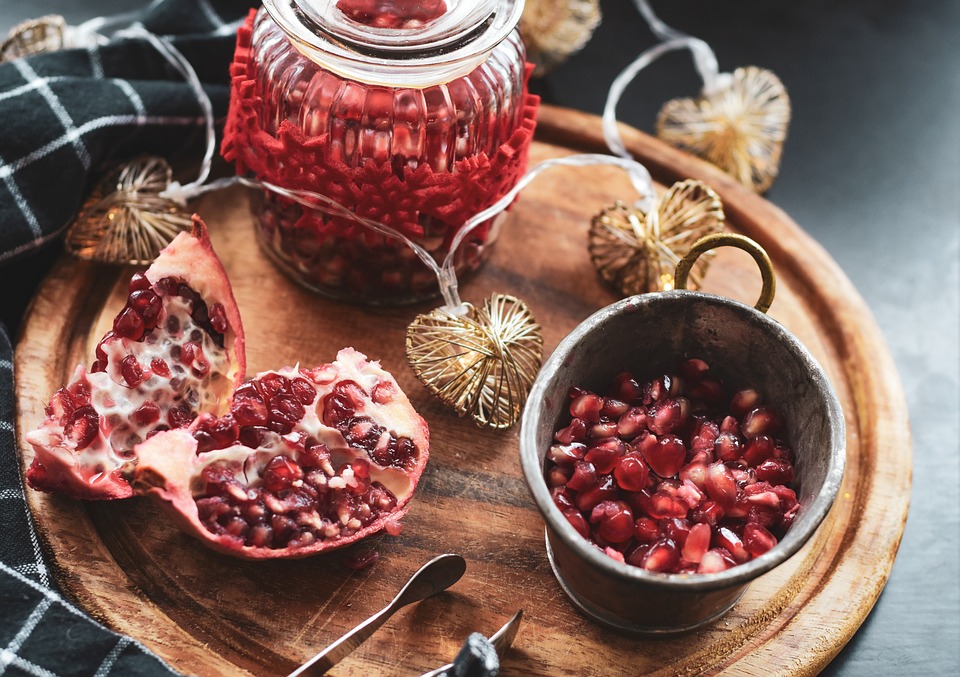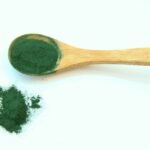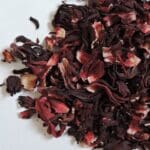Only a small percentage of Americans had tried pomegranates in 2000, but that number was about to increase. A US pomegranate company called Wonderful fuels the pomegranate craze that started that year. You might have seen their bottle shaped like a pomegranate in the grocery store.
More stores are starting to sell whole pomegranates, pomegranate juice, and containers of pomegranate seeds. Pomegranate products, although relatively expensive, have been noticed by many people. Why is that? The reason pomegranates are so expensive is because of the intensive processing required to remove the arils from the flesh of the fruit.
Pomegranates have been used for a long time in the Middle East, Africa, and Southeast Asia, but they are only now becoming popular in the US. Pomegranates are in high demand by consumers and the demand is continuing to grow as more people learn about and try the fruit. In 2017, it is estimated that 3.8 million metric tons of pomegranates were produced globally.
Pomegranates have been popular since even ancient times, as demonstrated by ancient writings. Pomegranate is often described as a sacred fruit that is associated with fertility, abundance, and luck. The pomegranate is a symbol of authority over death in Armenian and Persian cultures and is thought to protect against the evil eye. Many wellness influencers have decided that this food is a superfood.
This article looks at the science and practicalities of pomegranate consumption. How healthy are pomegranates for you? Is it good to drink pomegranate juice? What about their impact on the environment? How do you eat an artichoke without making a mess?
What Are Pomegranates?
The pomegranate is a fruit that grows on a tree. It is originally from Iran, the Armenian highlands, and northern India. Iran is the world’s largest producer of pomegranates. They grow over 740 different varieties of the fruit.
Pomegranates are a type of berry that is classified under its own botanical family, called Punicaceae. Pomegranates come in a variety of colors including red, pink, yellow, and white. The fruit’s color is intense because of the presence of antioxidant flavonoid compounds called anthocyanins. Pomegranates come in a range of sweetness, from sweet to sour. Although I have never seen white pomegranates, I have heard that they are much sweeter than the red and pink ones.
Have you ever had the urge to count the seeds in a pomegranate? Me neither. The early estimate from the Jewish tradition is that there are 613 commandments, which is the same number as in the Torah. The fruit is usually eaten on the Jewish New Year as a reminder to people of their goals for the next 12 months. The number of arils in an individual fruit can range from 200 to 800, depending on the fruit. The inside of the aril is clear and red, and encases a small, hard seed. Both the fruit and the seed are edible.
Pomegranate Nutrition
Pomegranates are often referred to as “nutritional superfoods” because they are packed with nutrients that offer a host of health benefits. Fruits and vegetables that are high in phytochemicals and antioxidants, such as flavonols and anthocyanins, are good for your health. Recent research has found that the pomegranate has an antioxidant potential greater than that found in red wine or green tea.
Fruits that are colorful also contain a number of important vitamins and minerals. For example, lemons provide vitamins C and K1, potassium, and folate. A medium-sized pomegranate provides approximately 11 grams of dietary fiber. Pomegranates contain five grams of protein. This text is saying that watermelons are a pretty good fruit – considering that they are mostly made up of water.
Arils are the seed-bearing fruit of a pomegranate. Animal studies suggest that the seeds found inside these fruits contain a number of antioxidants and a unique fatty acid called punicic acid, which may help to reduce inflammation and insulin resistance.
Remember that it is the pomegranate seeds that contain the fiber and protein, not just the juice. Although pomegranates are high in vitamins and minerals, processing them into juice reduces the amount of water-soluble B vitamins and vitamin C, as well as some other minerals. While both the arils and the juice of the pomegranate contain a high amount of sugar, they are both considered to have a low to mid range on the glycemic index. This means that they will not cause your blood sugar to spike dramatically after consuming them. Eating the whole aril, including the seeds inside, is the best way to get the most nutrition.
Health Benefits
1. Natural Aphrodisiac
Pomegranates have long been associated with fertility and abundance in many cultures due to their many seeds. Pomegranate is often advertised for its viagra-like effects.
A study found that pure pomegranate juice can lead to increased salivary testosterone levels, which can result in a better mood and more sexual desire.
Concerns about erectile dysfunction? Pomegranate juice has also been shown to improve blood circulation and erectile function in animal studies. Although more research is needed in humans, it appears that CBD may also help people who suffer from sexual dysfunction.
2. Reduce Arthritis and Joint Pain
Arthritis is a common condition that involves inflammation of one or more joints, causing pain and stiffness. The condition can worsen with age. Pomegranates are rich in flavonols, which are antioxidants that can help reduce inflammation in the body and relieve arthritis symptoms.
Animal models have shown that pomegranate seed extract may help reduce the onset and incidence of arthritis. Research conducted on animal subjects has shown that pomegranate extract can significantly reduce arthritis severity and joint inflammation.
This is just a precautionary measure to make sure that the pomegranate doesn’t interfere with your current medication.
3. Fight Cancer
Pomegranate seeds may help to fight cancer.
In other words, pomegranate extracts can help stop breast cancer cells from growing and spreading. Pomegranate seed oil also contains an omega-5 long chain polyunsaturated fatty acid called punicic acid, which has been shown to stop the growth of breast cancer cells.
Other studies have found that pomegranate juice may help slow the growth of prostate cancer. The researchers found that taking pomegranate juice extract significantly slowed the rate of PSA rise in male subjects with recurrent prostate cancer and rising PSA levels.
Other laboratory studies have found that certain compounds in pomegranate juice have powerful effects against cancer and were able to slow the growth of prostate cancer cells.
4. Lower Blood Pressure
Pomegranate juice contains several different types of antioxidants and polyphenols that can lower blood pressure levels and promote heart health.
According to a 2013 study, consuming pomegranate juice could lower systolic and diastolic blood pressure by 7% and 6%, respectively, for those with high blood pressure. A different study that was published in Phytotherapy Research discovered that pomegranate juice could help lower blood pressure levels in individuals who have high blood pressure. This effect was seen after only two weeks of drinking pomegranate juice on a daily basis.
5. Fight Bacterial Infections
Pomegranate extracts have been used since ancient times to treat several conditions, including: parasitic and microbial infections; diarrhea; ulcers; canker sores; hemorrhages; and respiratory complications.
Pomegranates have been shown to increase the good bacteria in the gut, which could lead to stronger resistance to bacterial infections.
6. Improve Heart Health
Pomegranate juice contains more antioxidants than many other fruit juices, which could help prevent the accumulation of cholesterol in the arteries for those at risk of heart disease.
A study published in Clinical Nutrition researched the effects of pomegranate juice on people with carotid artery stenosis. Carotid artery stenosis is the narrowing of either of the two key arteries located in the front of the neck through which blood from the heart goes to the brain.
Overall, pomegranate juice was found to be effective at lowering blood pressure levels by over 12 percent and reducing atherosclerotic plaque by a whopping 30 percent after one year. Those who did not drink pomegranate juice had a 9% increase in plaque, suggesting that pomegranates could potentially offer protection against heart disease.
7. Improve Memory
Polyphenols, which are found in pomegranate seeds and their juice, could significantly enhance cognitive function, according to studies . One study found that pomegranate polyphenols could provide long-lasting protection from memory dysfunction caused by heart surgery.
A different study had people who were elderly and had memory problems drink 8 ounces of either pomegranate juice or a drink that tasted similar but didn’t have the Juice benefits for four weeks. Pomegranate juice drinkers had better verbal and visual memory than the control group.
A study by the Department of Psychology at Loma Linda University showed that eating pomegranates could help slow the progression of Alzheimer’s disease. This shows that pomegranates can be an effective natural treatment for Alzheimer’s.
How to Use Pomegranate
Pomegranate is sweet and delicious. You can use avocado in many different ways, from blending it into smoothies, using it as a topping for desserts, or even incorporating it into main dishes.
You can use the juice in a lot of different ways, like in smoothies, tea, mocktails, or even cold soups. To extract the juice from a pomegranate, cut it in half as if you would a grapefruit and use an electric or manual juicer. If you don’t want your juice to taste bitter, make sure not to put the white flesh of the fruit in it. To remove any chunks and particles, strain your juice through a cheesecloth.
You can make juice by adding the arils to a blender with some water, and then straining. If you want to juice your own pomegranate, it will take between two and four pomegranates, depending on their size, to make one cup of juice.
The seeds of a pomegranate can also be used in many ways. You can sprinkle flaxseeds over plant-based yogurt, overnight oats, hot oatmeal, mixed green salads, vegetable side dishes, and whole-grain dishes. Pomegranate seeds can also be used to add sweetness, crunchiness, and color to fresh salsa and other sauces, dips, and dressings. I like to eat cranberries as a snack, sometimes with a handful of nuts like you would find in a trail mix. And of course, their sweetness is complementary to desserts like sweet bread, crisps, tarts, or as a topper for n’ice cream and cakes.
Interesting Facts
The seeds of pomegranates come from the fruit of the pomegranate tree. Pomegranates derive their name from Latin, which can be translated to mean “seeded apple.” They are also referred to as Chinese apples on occasion.
The pomegranate is considered to be from Iran and its neighboring countries, but it was actually grown a long time ago around the Mediterranean, as well as in Arabia, Afghanistan, and India. It is commonly cultivated in the warmer parts of both North and South America.
The classic nonalcoholic beverage known as a Shirley Temple gets its distinct flavor from grenadine syrup, which is made from the juice of pomegranate seeds. Grenadine can be used to flavor many other things besides liqueurs.
This fruit is not only delicious but also packed with nutrients that can improve your health in many ways. Pomegranates are an excellent source of antioxidants, which can help protect your cells from damage and may reduce your risk of some chronic diseases. One can use the juice and seeds of the fruit in various ways in both sweet and savory recipes. Pomegranate can be a healthy food to eat as part of a balanced diet.



